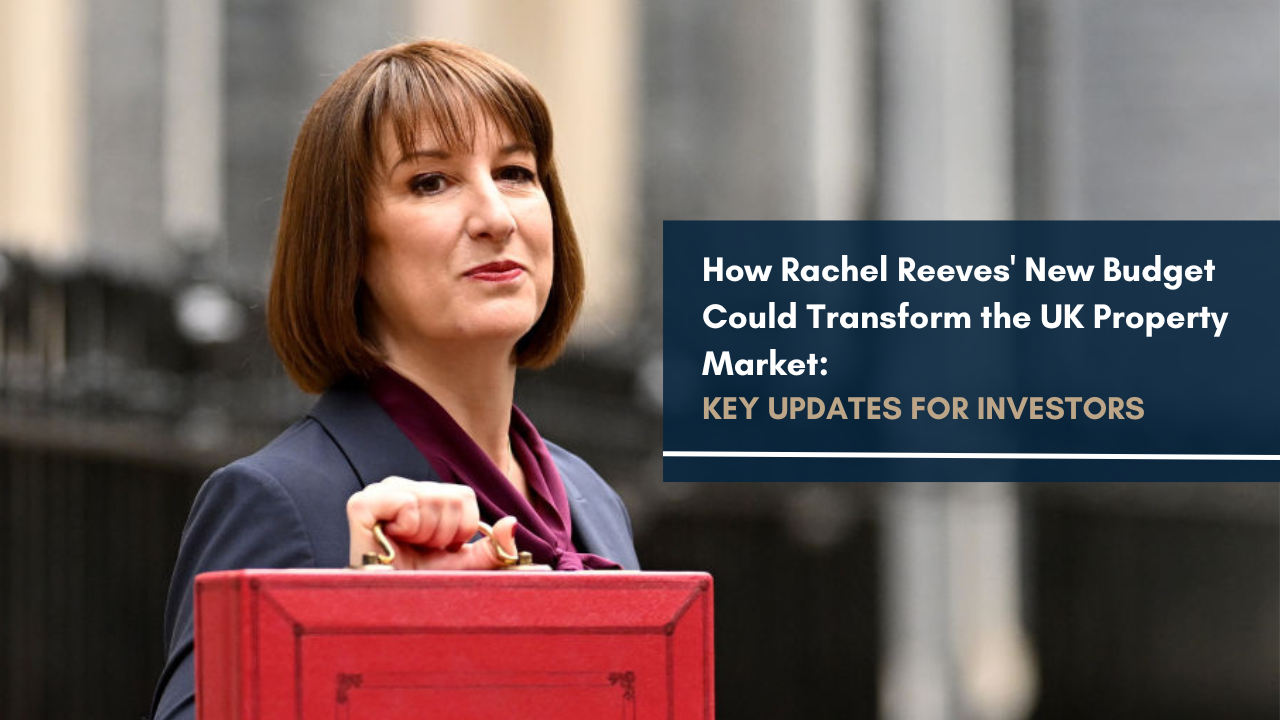After years of focusing on London and the South, property investors are increasingly looking towards the North of England for better value and future growth. Among the northern cities, two stand out: Liverpool and Manchester.
If you’d like to learn more about the latter, we suggest reading our buy-to-let investment guide for Manchester.
But if you’d like to learn more about property investment in Liverpool, read on.
Since being named the European Capital of Culture in 2008, the city has enjoyed a period of significant growth and progress. Many areas are undergoing extensive regeneration, with public and private organisations investing billions into businesses, housing, and infrastructure all over Merseyside.
Meanwhile, demand for property in Liverpool is growing, particularly for rentals in the most central areas – young professionals and students want to live in the centre for easy access to jobs and education, while tourists like to stay centrally to be closer to the city’s most famous attractions (creating a market for Airbnb-style short-term lets).
Plus, the average sale price of a property in Liverpool is lower than other major UK cities. As of March 2024, it’s just over £206,500 according to Zoopla, compared to £248,500 in neighbouring Manchester.
Altogether, this creates the perfect storm for a property investor. Property is more affordable (and therefore has plenty of room to grow), yet rental demand is high (pushing rental prices up).
But what properties are currently available? Where are the best areas? And why should you pick Liverpool over another city?
Find out all of that, and more, in this complete guide to buy-to-let in Liverpool.
Available Buy-To-Let Properties In Liverpool
Contents
- The Best Buy-To-Let Areas In Liverpool
- Why Liverpool?
- Should You Invest In Liverpool Or Manchester?
- Summary
The Best Buy-To-Let Areas In Liverpool
The best areas for a buy-to-let offer a well-balanced mix of profitable rental yields and growth in property value (capital appreciation).
So, using exclusive property market data, we can identify Liverpool’s hotspots.
Merseyside, which includes the main city of Liverpool and the four surrounding boroughs of Knowsley, St Helens, Sefton, and the Wirral, consists of 56 postcode districts (L1, L2, L3, etc).
We’ve scored each postcode’s average rental yield and growth in property values over the past five years. The scoring system is simple:
- The postcode with the highest average rental yield receives 56 points. The second-best receives 55 points. And so on.
- The postcode with the highest growth receives 56 points. The second-best receives 55 points. And so on.
- The rental yield score is multiplied by three to give it a stronger weighting (yield should take slight precedence for buy-to-let investors).
- The two scores are added together to calculate a final score, by which the results are ordered.
Without further ado, here are the best buy-to-let areas in Liverpool:
| Postcode | Avg Yield | Score | 5YR Value Growth | Score | Total Score |
|---|---|---|---|---|---|
| L4 | 7.80% | 168 | 36% | 53 | 221 |
| L5 | 6.70% | 159 | 75% | 56 | 215 |
| L13 | 6.90% | 162 | 25% | 43 | 205 |
| L20 | 7.50% | 165 | 22% | 36 | 201 |
| L1 | 5.80% | 138 | 38% | 54 | 192 |
| L6 | 5.50% | 135 | 40% | 55 | 190 |
| L8 | 6.20% | 147 | 20% | 32 | 179 |
| CH41 | 6.60% | 153 | 17% | 24 | 177 |
| L9 | 6.70% | 156 | 13% | 14 | 170 |
| CH44 | 4.70% | 123 | 26% | 44 | 167 |
1. L4 – Anfield
The best buy-to-let area in Liverpool is L4.
This table-topping postcode covers Anfield, Goodison Park, and Walton – home to the famous stadiums of Premier League football clubs, Liverpool and Everton, which are separated by the expansive Stanley Park.
The postcode generates an excellent average rental yield of 7.8% which tips the scales in its favour. Meanwhile, prices have increased by 36% in the past five years. This is nowhere near the level of growth seen in second-placed L5 (+75%), but it is well above the regional average of 20%.
Property in the area is valued lower than many other postcodes in Liverpool (just £117,170), which seems to drive the higher yields.
2. L5 – Vauxhall and Everton
With an astounding 75% growth in property values over the past five years, L5 (covering Vauxhall and Everton) is a strong choice for investors.
Regeneration efforts in the area, along with the development of new, modern residential apartments, have aided growth. Everton Football Club’s new stadium is currently under construction on Bramley Dock, for instance.
3. L13 – Old Swan and Tuebrook
The L13 postcode, covering Old Swan and parts of Tuebrook, is the third-best area in Liverpool for a buy-to-let, according to our data.
Sitting just outside Liverpool’s city centre, the area is popular with young families and professionals. This creates a strong rental market, with an average rental yield of 6.9% bettered only by L4 and L20 in Merseyside.
Plus, over the past five years, property values in L13 have grown by 25%, reflecting the steady demand.
4. L20 – Bootle
For those seeking a budget-friendly option out of the city centre, Bootle’s L20, in fourth place, is worth considering.
In 2013, This Is Money named Bootle a “buy to let boomtown”, with it proving popular with both landlords and tenants due to the area’s affordability.
Average property prices are just £120,495, but an average yield of 7.5% means L20 can generate excellent returns for investors.
5. L1 – City Centre
Our results suggest buy-to-let investors stand to benefit greatly from Liverpool’s central areas, with the L1 postcode taking fifth place.
L1 is home to the Baltic Triangle, named by Time Out as the coolest place to live in the UK. The area is filled with high-end apartments, independent shops, restaurants, bars, and creative office spaces.
Furthermore, L1 has seen a 38% increase in property values over the past five years. It’s a stunning level of growth that has been aided by the regeneration and development of some of the city’s busiest and most important areas – from Albert Docks and the Baltic Triangle, stretching out to St George’s Quarter and the Knowledge Quarter.
6. L6 – Kensington and Fairfield
Although it has a weaker average yield than the rest of the top 10 (5.5%), L6’s strong growth in property values catapults it into the top 10 and makes a strong case for investors prioritising long-term capital appreciation.
Plus, the average yield is still well above average for Liverpool (4.97%) – it’s simply just not as strong as others.
Kensington and Fairfield, both in L6, are only a short distance from Liverpool’s city centre, making the area popular with students and young professionals who want to be in touching distance of the city’s core and main universities.
7. L8 – Georgian Quarter, Toxteth & Dingle
L8 is a diverse area. It covers the Georgian Quarter, one of Liverpool’s most picturesque and in-demand areas, and extends southwards to inner city areas like Dingle and Toxteth.
The Georgian Quarter is popular with students, with the University of Liverpool nearby. Check out our guide to learn more about student property investment in Liverpool.
Meanwhile, Dingle and Toxteth are enjoying a revival.
These areas had less than desirable reputations for a long time, but that’s all changing thanks to major regeneration projects. It’s densely populated, with a mix of Victorian-era terraces and larger family houses (commonly broken up into individual flats), which are attractive to both students and young professionals.
8. CH41 – Birkenhead
Our results are largely dominated by postcodes within the City of Liverpool.
Eigth-place CH41, however, sits outside the city.
Covering Birkenhead, the area sits on the opposite side of the River Mersey from the city centre, connected by the Kingsway and Queensway Tunnels. Similar to L4, its yield performance is likely helped by lower-than-average property values, with the average property worth £125,440.
9. L9 – Walton and Aintree
The L9 postcode, which includes Walton and Aintree, is a little further out from Liverpool’s city centre but still offers a strong opportunity for buy-to-let investors due to its attractive yields (6.70%).
The extra distance makes Walton and Aintree popular with families and commuters. The area benefits from a range of amenities, including local shops, parks, and the well-known Aintree Racecourse (great for the local economy).
10. CH44 – Wallasey
Finally, CH44 rounds out our top 10.
Part of the Wirral Peninsula, CH44 covers the town of Wallasey, which is directly across the River Mersey from Liverpool.
It is, in fact, adjacent to CH41 (see above). Yields are below the city’s average, but the area has enjoyed excellent growth in property values – 26% in the past five years – to push it into the top 10.
Why Invest In Liverpool?
Not yet convinced about Liverpool?
Then read on as we explain why you should add the city to your property portfolio.
Or, if you would prefer to watch and listen, then we recently covered this topic on our podcast, which you can watch below:
Lower Property Prices
The average property price in Liverpool is £206,567 (according to Zoopla, as of March 2024). This is much lower than other major cities:
| Area | Average Value |
|---|---|
| Liverpool | £206,567 |
| UK as a whole | £336,280 |
| Birmingham | £250,018 |
| Bristol | £392,848 |
| Cardiff | £286,328 |
| Edinburgh | £348,802 |
| Leeds | £249,576 |
| London | £735,195 |
| Manchester | £248,539 |
| Sheffield | £244,941 |
In short, Liverpool is more accessible to investors with lower budgets. It also means better value for money, as somebody could purchase three properties in Liverpool for the same price as one in London. This might appeal to those aiming to build a multi-property portfolio.
And secondly, it means better yields. Liverpool has consistently generated some of the strongest rental yields in the country thanks to affordable property prices and high rental demand.
Growing Property Market
With lower property prices in comparison to other cities, there’s plenty of room for price growth in Liverpool. And with huge regeneration projects across the city, mass public and private investment, and a thriving job market, that’s exactly what’s happening.
In December 2023, The Telegraph named the city as one of the top 10 in the UK for house price growth. Meanwhile, Zoopla published research showing the city has the fastest-moving market in the country, with the average property selling in just 17 days.
Plus, there’s plenty of room for further growth. Savill’s residential property forecast predicts the North West will witness a 20.2% increase in average property values over the next five years.
Thousands Of Students
Liverpool has three universities: The University of Liverpool, Liverpool John Moores University, and Liverpool Hope University.
The pedigree of a university is a major pull factor for prospective students. Liverpool enjoys an excellent reputation in this regard. The University of Liverpool has nine Nobel Prize winners amongst its alumni, whilst it was also a founding member of the Russell Group of Universities in 1994.
Overall, there are over 60,000 students spread across the three universities. Half of this population is reliant on Purpose Built Student Accommodation (PBSA) or private rentals (e.g. student HMOs).
But why is this good for investors?
A large student population is a major plus for any property investor. In general, student property achieves excellent rental yields as landlords can either fill properties with multiple paying occupants, or they can focus on the higher end of the market – international students, for example, are often willing to pay for more luxurious spaces.
Young Professionals
The number of young professionals living in Liverpool is rising quickly. The Liverpool Echo reported that, between 2001 and 2011, the number of 22-29-year-olds living in the city centre nearly quadrupled.
This has likely continued, as the young professional population is being fed by the city’s universities. The graduate retention rate is one of the highest in the UK (joint 8th at 38% with Newcastle according to Knight Frank). Plus, there’s a healthy mix of new graduates from other sources, such as those returning to the city after leaving for university – this group makes up roughly 20% of Liverpool’s graduate workforce according to a Centre for Cities report from 2017.
Furthermore, with the London housing and rental market becoming increasingly unaffordable, a rising number are moving away from the capital to alternatives in the north.
This should be music to the ears of a property investor. Young professionals are the ideal tenant demographic – they earn solid salaries, are willing to pay extra for quality and location, and often need to rent for several years while they save for a mortgage deposit.
Booming Tourism
Liverpool’s visitor economy is worth £4.9bn each year, thanks to its status as a major tourist attraction – it’s the 5th most visited city in the UK.
Tourism is driven by several factors, such as:
- Sport: The city is home to two Premier League football clubs, Liverpool FC and Everton FC. Due to the international appeal of the Premier League and the historical success of both teams, fans from all over the world visit every weekend to attend games. Plus, nearby Aintree Racecourse hosts the hugely popular Grand National horse race.
- Art & Culture: Liverpool has the highest number of museums, parks, listed buildings, and galleries outside of London.
- Music: Forever known as the birthplace of The Beatles, Liverpool has always had a rich association with musical pedigree. The Beatles, in particular, bring in thousands of tourists, with their history captured at attractions like the Cavern Club.
- Nightlife: Liverpool’s famous nightlife is another major draw. Several areas within the city centre are dedicated to bars, pubs, and clubs of all varieties.
But what does this mean for buy-to-let investment in Liverpool?
Tourists need places to stay. And the demand for high-quality serviced accommodation (such as the type of properties typically found on Airbnb) has opened up an entirely new investment opportunity.
With a short-term letting model, property owners can let their properties to visitors at a higher price per night than a long-term renter would be willing to pay, which can result in exceptional rental yields.
Should You Invest In Liverpool Or Manchester?
Manchester and Liverpool have enjoyed a similar trajectory over the past few decades.
Both witnessed incredible growth during the Industrial Revolution, owing largely to the Manchester Ship Canal, which connected Manchester’s factories with the rest of the world via Liverpool’s port.
But following the end of the First World War, an economic slump hit the UK. Industrial cities in the north were heavily impacted, leading to mass unemployment and poverty. It has taken decades to fully recover, with several setbacks along the way.
Since the 1990s, both Liverpool and Manchester have witnessed mass urban regeneration and widespread public and private investment. The cities have, in effect, been completely transformed and the last few years, in particular, represent a period of incredible success and growth.
But which is better for a property investor?
We consider the question in our blog post: Is it better to invest in Manchester or Liverpool?
But if you’re after a quick summary, the main argument for Liverpool is that property in the city is more affordable than in Manchester, making it more accessible to investors on a budget. It also means huge growth potential and excellent yields.
Meanwhile, the main argument for Manchester is that, historically, it has delivered better property and rental value growth – and all forecasts suggest this is set to continue.
Summary
Purchasing a buy-to-let in Liverpool, especially in the most central areas, should be a strong consideration for any investor.
Generally, the property prices are not as high as those found in Manchester, making the city a more affordable location – perfect for entry-level buyers.
Of course, the lower purchase prices mean rental values aren’t as high either, but Liverpool is on the same trajectory as its neighbour and old rival.
If you’re interested in finding out more, please get in touch with our team using the form below. We’ve helped hundreds of investors, from all around the world, find the right property for their requirements, budgets and goals. We’re a property investment company operating across Liverpool and the North of England.
We can help with every step of the process. Our expertise, due diligence, and connections mean we can source excellent opportunities. We don’t charge a fee for our service and we’re members of the Property Ombudsman.
About this data
The data in this article comes from PropertyData. It is an accurate representation of the Merseyside property market as of March 2024. We’ll update this report next year, in 2025, with fresh data.










































